US Marines reveal their rules for the Robot Wars
- By Hope Seck
Share This Article
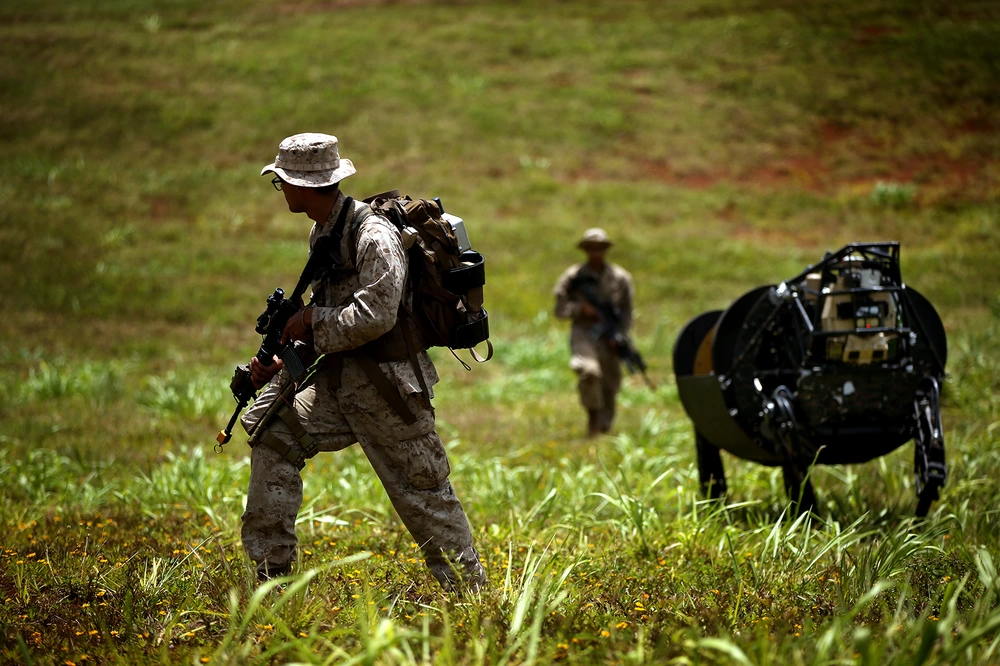
When the robot wars begin, the Marines are determined that they’ll be ready.
The release of the GPT-4 large language model system in March has launched a freshly urgent conversation about how vastly more capable artificial intelligence will change society and warfare. The Marine Corps is among the first of the service branches to address the realities of a future battlespace with intelligent robotics and machines that can “think” on a level previously only seen in science fiction.
In the annual update to the Marine Corps strategy document Force Design 2030, released in June, the service spends several pages addressing “Intelligent Robotics and Autonomous Systems,” or IRAS. It outlines, among other things, the rules under which the service wants Marines to train and eventually fight alongside and even against these smart machines.
While the larger culture has been captivated recently by computers that can write term papers and automate a frightening number of work tasks, the U.S. military has been paying close attention to machines in warfare for much longer. It took particular note of the 2020 Nagorno-Karabakh War in the South Caucasus, in which the use of drones by Azerbaijan played a decisive role in the outcome of the conflict. Weaponized and surveillance drones have also been plentiful and highly effective in the ongoing Russia-Ukraine war, sometimes destroying equipment that is orders of magnitude more expensive and complex.
Related: The two armored vehicles that will define the Ukrainian counteroffensive
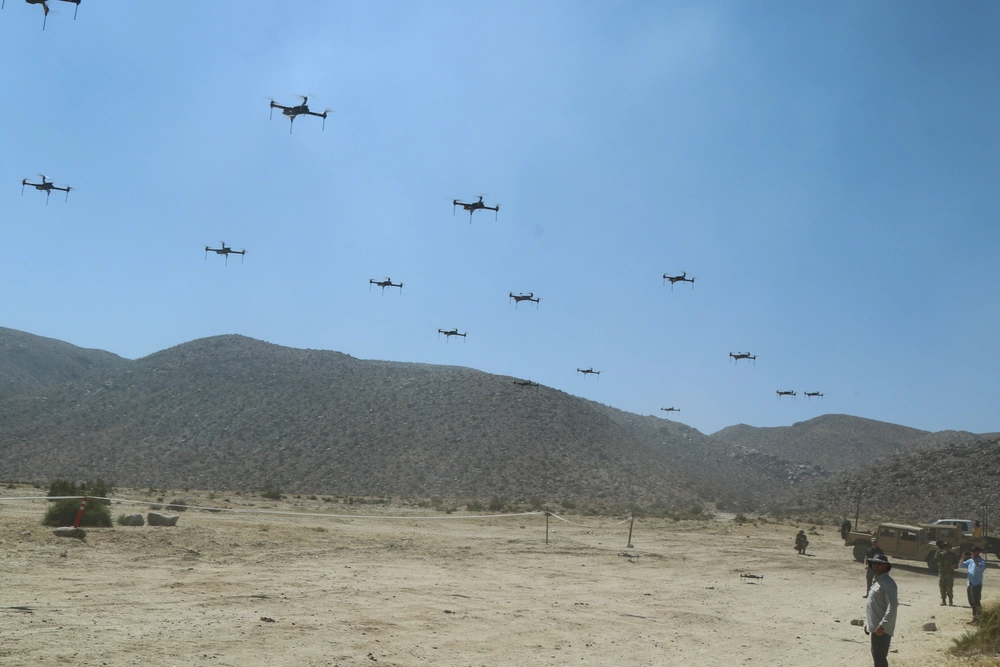
To be ready for such a fight, the new force design update states, the force must reject a “platform-centric” approach, focused on specific combat tools and equipment, to a “capability-centric” approach, “where [IRAS] are employed by trained specialists who contribute to all-domain operations.”
Marines, it says, must find cost-effective ways to fight when drones worth hundreds or thousands of dollars are threatening weapons or gear worth millions. Above all, the new rules for fighting show, Marines must remember that they are the most important weapon in the battlespace.
The Marines’ newly released “Principles of Martial Robotics” are the following:
- The human element of armed conflict remains central in the use of IRAS.
- IRAS augment and enhance human processes, without replacing the warfighter.
- Marines must fight at machine speed or face defeat at machine speed.
Related: How US special operators use Artificial Intelligence to get an edge over China
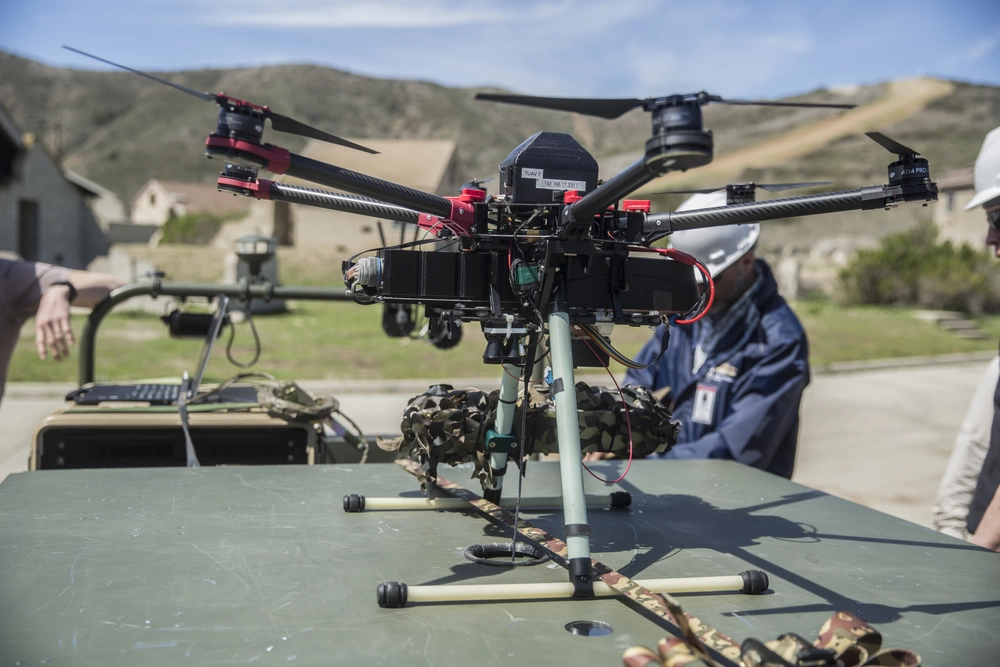
To allow Marines to fight at machine speed and stay ahead of the enemy, the document continues, the service must double down on some principles, such as being agile and resilient and delivering cutting-edge gear to the warfighter “at the speed of relevance,” and define some newly prominent priorities, such as treating data “as a strategic resource” and rejecting stovepiping in favor of rapid information-sharing and effective cooperation with friendly entities in industry, academia, and government to shore up defenses.
“IRAS can greatly multiply a military force’s capabilities across the competition continuum by reducing risk to human operators, accelerating task execution, and providing decisive effects,” the document states. “To fully leverage these effects and capitalize on the advantages IRAS brings to modern warfare, the Service must recruit, manage, professionalize, and retain Marines that are experts in the employment of IRAS.”
This mandate comes with a lengthy to-do list. The Marine Corps plans to publish a dedicated IRAS strategy document by the first of next year to guide its next steps. Among a few dozen other action items, the most dramatic is a proposal that would create a first-of-its-kind military occupational specialty, or job field, focused on IRAS and an accompanying talent management strategy to recruit hotly demanded robotics experts. Service leaders plan to come to a decision on whether to create a field of Marine specialists by the start of 2025.
Related: How a false story about the Air Force’s ‘rogue’ AI took the world by storm
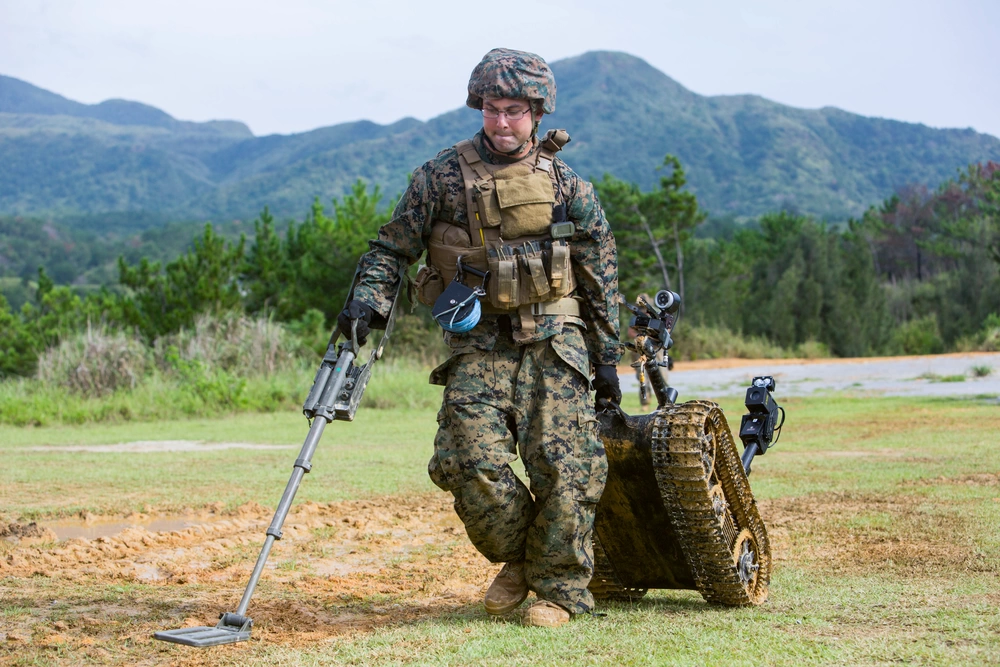
Marine Corps Commandant Gen. David Berger has ordered one of the service’s three regional Marine Expeditionary Forces to be identified as the hub for IRAS experimentation and assessment before the end of this year. Marine Corps Training and Education Command will then reach out to academia, industry, and research institutions, as well as allied militaries, to “synchronize and disseminate” rules and concepts governing combat with robotics and autonomous systems. These will be disseminated into military schools and learning centers as the Marine Corps prepares to embark on focused assessments and experiments.
In 2024, the service plans to launch its experimentation effort in earnest and build a framework for rapid acquisition of “high demand, low cost, risk-worthy systems” – unmanned platforms inexpensive enough that they can easily be sent into risky combat situations.
Under all this planning, it’s clear the Marine Corps is working to get ahead of a paradigm-shifting reality: complex and sophisticated robotics technology and machine learning is becoming increasingly cheap and accessible, and is capable of doing serious damage to the elaborate legacy war systems that still largely define conventional warfare. The reiteration that the human Marine, not the machine, remains at the heart of the service’s strategy, aims to keep the Corps true to its mission amid this rapidly evolving technological environment. How effectively the service will pivot to meet the threat remains undetermined, but its head-on approach to the challenge may create a helpful path for the other branches to follow as the world changes “at machine speed.”
Feature Image: Lance Cpl. Brandon Dieckmann, (front), native of Las Vegas and Pfc. Huberth Duarte, from Riverside, Calif., and infantrymen with India Company, 3rd Battalion, 3rd Marine Regiment, prepare to walk with the Legged Squad Support System through a grassy area at Kahuku Training Area on Oahu, Hawaii, July 12, 2014, during the Rim of the Pacific 2014 exercise. The LS3 is experimental technology being tested by the Marine Corps Warfighting Lab during the Advanced Warfighting Experiment. It is programmed to follow an operator through terrain, carrying heavy loads like water and food to Marines training. There are multiple technologies being tested during RIMPAC, the largest maritime exercise in the Pacific region. This year’s RIMPAC features 22 countries and around 25,000 people. (U.S. Marine Corps photo by Cpl. Matthew Callahan/RELEASED)
Read more from Sandboxx News
Related Posts
Sandboxx News Merch
-

‘AirPower’ Classic Hoodie
$46.00 – $48.00 Select options This product has multiple variants. The options may be chosen on the product page -

‘Sandboxx News’ Trucker Cap
$27.00 Select options This product has multiple variants. The options may be chosen on the product page -

‘Kinetic Diplomacy’ Bumper Sticker (Black)
$8.00 Add to cart
Hope Seck
Hope Hodge Seck is an award-winning investigative and enterprise reporter who has been covering military issues since 2009. She is the former managing editor for Military.com.
Related to: Breaking News, Gear & Tech
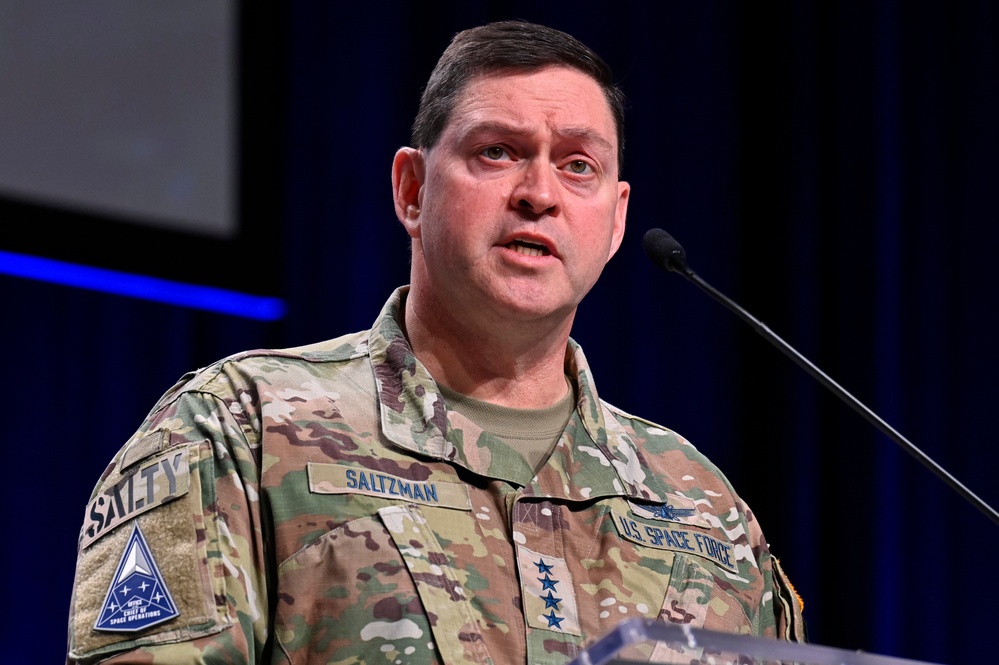
Dogfighting in space? Not too far-fetched, Space Force chief says
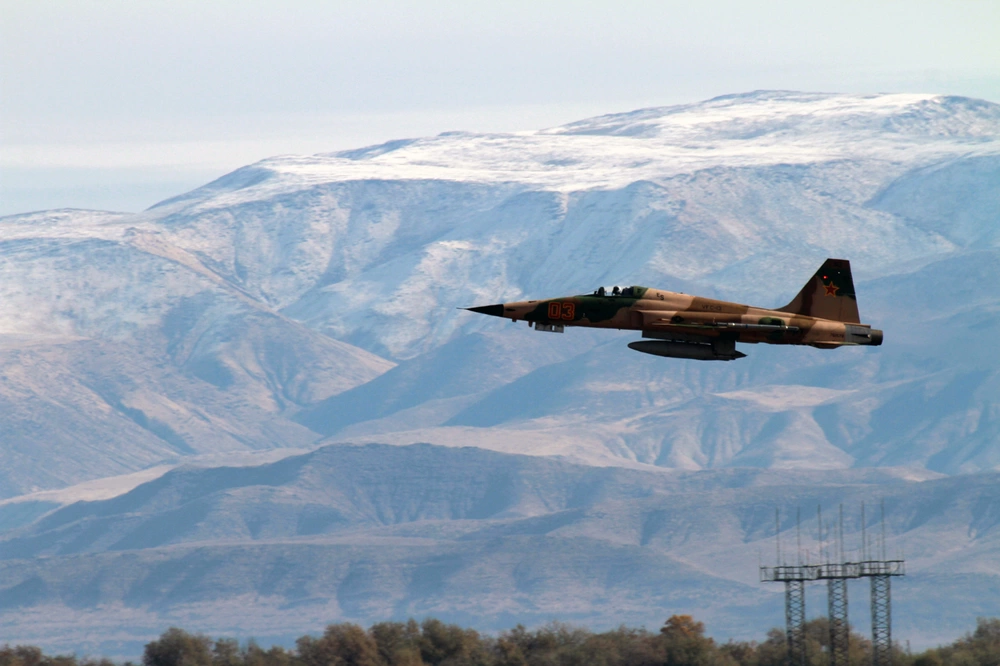
New master’s degree will train Top Gun pilots on foreign adversaries and space warfare
Sandboxx News
-

‘Sandboxx News’ Trucker Cap
$27.00 Select options This product has multiple variants. The options may be chosen on the product page -

‘AirPower’ Classic Hoodie
$46.00 – $48.00 Select options This product has multiple variants. The options may be chosen on the product page -

‘AirPower’ Golf Rope Hat
$31.00 Select options This product has multiple variants. The options may be chosen on the product page -

‘Sandboxx News’ Dad Hat
$27.00 Select options This product has multiple variants. The options may be chosen on the product page
